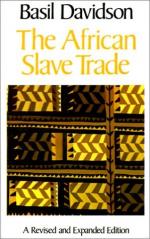|
This section contains 570 words (approx. 2 pages at 300 words per page) |

|
Although in principle the official abolitionist organizations supported any and all actions undertaken in the name of the slave's liberty, they were not, for the most part, aligned with the more amorphous and secretive Underground Railroad. However, the various "vigilance committees" that had sprung up throughout the Northeast were deeply engaged in providing assistance to fugitive slaves. Black abolitionists such as David Ruggles, William Still, and Robert Purvis were especially active in vigilance committees, whose help included not only food and shelter but also aid in resettling in the free black community and, occasionally, even legal support against bounty hunters or pursuing owners. Many of the committee members were also conductors, including Still, his friend Joseph C. Bustill, and Syracuse minister J. W. Loguen, himself a fugitive slave.
The period between 1830 and 1865 comprises the peak years of Underground Railroad...
|
This section contains 570 words (approx. 2 pages at 300 words per page) |

|




